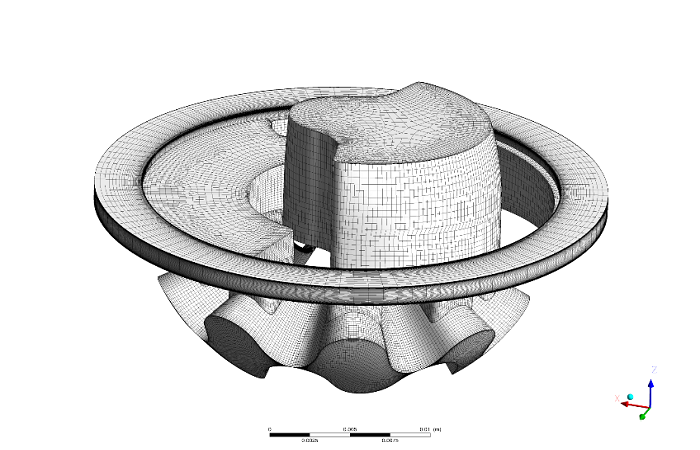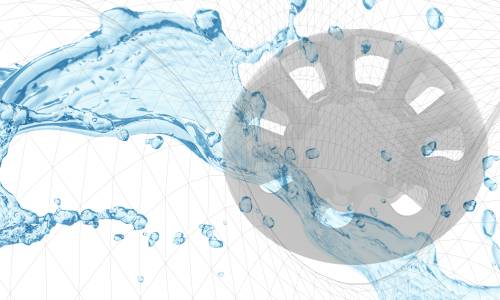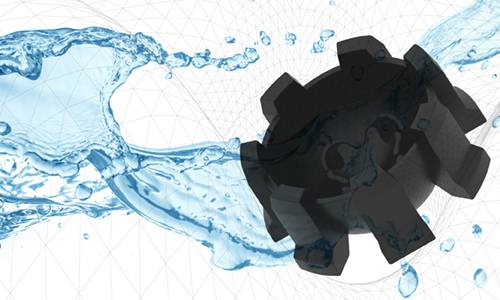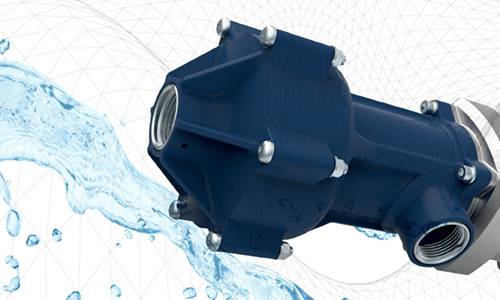TMC and DPR COR pump concepts
- COR >
- Design concepts
Comparison of COR-TMC and COR-DPR principle
The COR pump is a new pump technology in group of positive displacement pumps. Basic pumping idea came from the axial piston pump family. The COR technology consist of 2 pumping principles:
- DoppelRotor (COR-DRP) and
- Tumbling multi chamber (COR-TMC).
The COR pump system consists of 4 pieces of which 2 are rotating. No valves are needed. Most of the torque is converted into useful work as only one of the two rotating pieces is driven. Due to the design concept, the second one only needs torque to overcome its friction. The fluid is transferred through the center of the pump and transferred with the help of moving cavities and centrifugal force to the outlet on the periphery.
Basically the pump design is based on 3-dimensional trochoid gear shape with function of pulsating chambers for volume displacement. The operating principle is based on the formation of the separate chambers, closed by two gearing topographies. When rotated, the chambers open (grow) and close (shrink) simultaneously and control fluid displacement precisely. Connection of the pulsating chambers with suitable control openings (with matching contours) results in the displacement effect. One of basic outputs of this pump design is pressure separation effect. The enveloping part (pump housing) also serves as a separating element between the pressure side and the suction side.
COR-DRP is analogous to a ge-rotor pump, as the fluid between the teeth is displaced by different rotational speeds of the rotors. COR-TMC is analogous to an axial piston pump, as the fluid is displaced by opening and closing of chambers.
The COR pump consists of a pump stator with a 3D inner gear shape with n teeth and a pump rotor with n+1 teeth, which fits on the stator shape under a certain angle. The gear shape (teeth) is arranged axially and the shape of the teeth enables simultaneous engagement, which ensures sealing between individual interdependent gaps.
Goals achievable with CDF simulations in R&D phase of COR pump
- Flow & flow ripple calculation
- Pressure field & pulsation analysis
- Volumetric loss calculation
- Viscous loss calculation
- Torque calculation
- Volumetric, mechanical & total efficiencies


CFD simulation steps in COR pump technology consist of
- Simplification of the geometry
- Mesh generation on pump parts, static & rotating geometry
- Setting of initial & boundary conditions (pressure, speed,..)
- Solving + monitoring the solution
- Results analysis
Performance parameters
The sources of performance losses in the pump are divide into mechanical-hydraulic and volumetric. Mechanically hydraulic losses are divided into mechanical due to friction, and into hydraulic due to viscous friction in the gaps, friction due to turbulent liquid flows and friction due to the difference in pressure in the system. Volumetric losses also include compression losses due to internal leakage, and loss due to compressibility of pumping fluid. The purpose of hydraulic pumps is to convert the mechanical energy into hydraulic. Efficiency characteristic is the parameter-defining ratio between input energy and useful energy on the exiting side of the system.
Flow-rate simulation (CFD)
To define best approach for CFD simulation of COR pump an review of the different methodologies used for the simulation of the flow rates generated by ge-rotor, external gear and crescent pumps was elaborated. Studies taking into account the influence on leakages of the interactions between the fluid and the mechanical parts where analyzed. The COR pump system includes a sophisticated software which enables to study the behavior of the fluid in four dimensions and to optimize conditions with regard to a given specification. The software also generates the necessary CAD data for the design of a pump.




